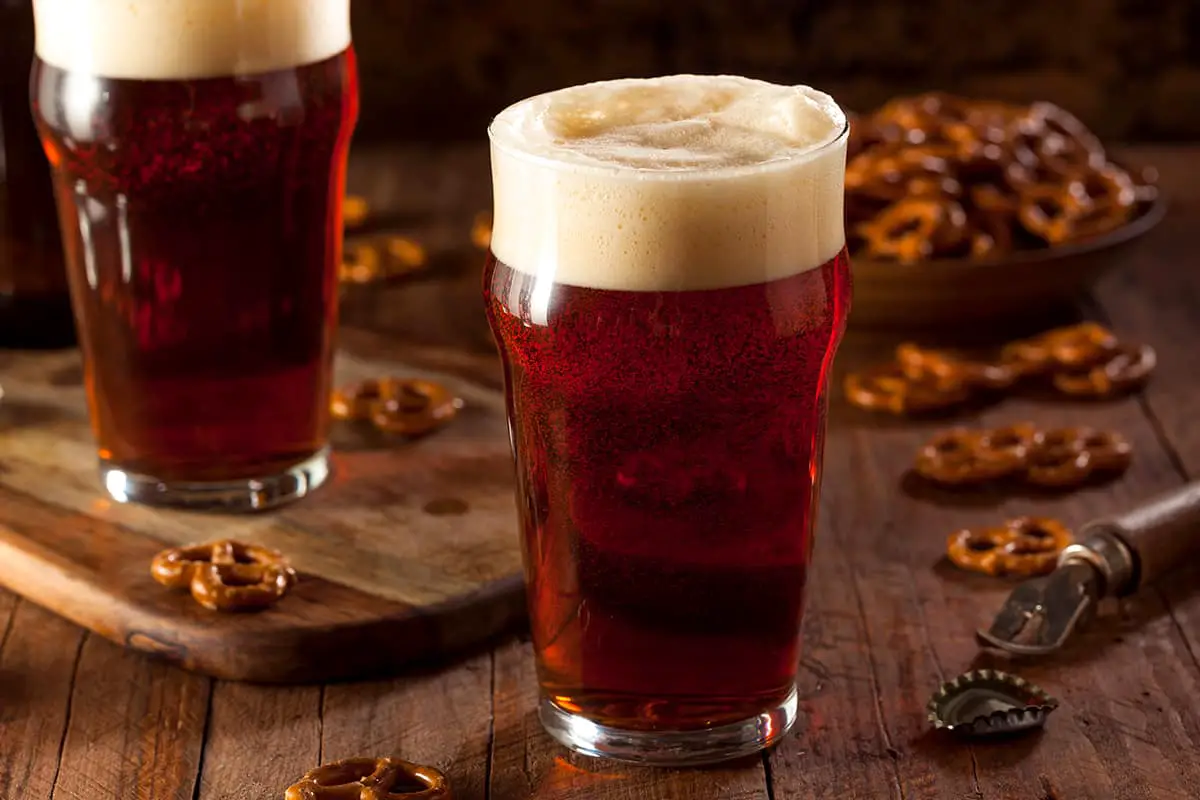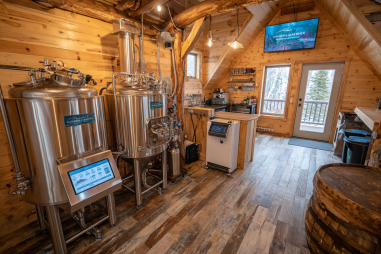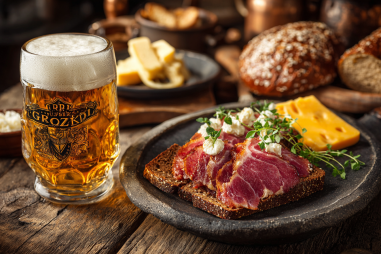Sadly, it had to succumb to the popularity of both the lagers and hops. It eventually had to take on hops as part of its brew. It had a good fight though. It still is the default beer in Düsseldorf after all.
This article tackles everything you would want to know about Altbier. It even includes the trade secret on how to brew it the old way right after hops became a part of the recipe. Uncover today the way of the ancient brewer, to bring about a new experience that is quite über.
Why Is It Called Altbier?
The word “Alt” is a German term that directly translates to “old.” Altbier was not really called Altbier from the get-go. German brewers named it that way to make a distinction during the time when Lagers were all the rage. They “shared” the term “bier,” so the brewers needed to do something about it. It is kind of saying that Altbier is an old-school beer and do not dare mix it up with the youngster Lagers.
Altbier maintained “old” beer-making rules like using herbs and spices instead of hops. It was stubborn to stick to using top-fermenting yeast. Note that this was before the time when hops and lager-yeasts were even a thing. Notwithstanding, Altbier slowly had to adapt to the changing times, at least with hops.
How to Pronounce Altbier
Ultimate-Beer sounds a whole like Altbier. Take the first syllable of ultimate, “Ult,” and stick it with a shortened beer emphasis, “bir.” It even sounds more marketable, doesn’t it? It sure beats the word “old” by a wide margin.
What Type of Beer Is Altbier?
Altbier is actually in a class of its own. It starts out as an Ale, but then it uses the process of a Lager. It sounds confusing. True. But it is the result of the specific climate of the area of Düsseldorf. Because this area is nice and chilly all year, the process of “lagering” is achieved when brewing.
What Is Lagering?
If you age a beer close to freezing temperatures for an extended period, you would call that “lagering.” Technically, you would start it after fermentation. And you would end it right before filtration and all the finishing work.
Is Altbier an Ale or Lager?
Altbier is a cross between an Ale and a Lager. This is because it brings parts of what makes each type of beer work, and harmonizes them. The parts mentioned, in their most basic form, are:
- using top-fermenting yeast like an Ale;
- fermented at a cool temperature like a Lager, and
- close to freezing conditioning for months on end like a Lager.
Is Altbier a Craft Beer?
Craft Brewers are small-scale, and usually family-owned, businesses. Their product is mostly craft beers like Altbier. How can you believe this is the case? Well, Altbier is made the “old” way, for the most part. And, it is not readily available outside the confines of Düsseldorf and its immediate regions.
Is Kölsch an Altbier?
Don’t dare call Kölsch an Altbier, you might unwittingly offend the folks at Cologne, Germany. You could say that there is a sort of rivalry between Cologne and Düsseldorf in this regard.
Here are a few quick differences you will find:
| Kölsch | Altbier |
| By local law, can only be brewed in Cologne | By local law, can only be brewed in Düsseldorf, specifically the Düsseldorf style |
| Pale Color | Amber Color |
What Does Altbier Taste Like?
In some versions, you could describe Altbier as a bittersweet symphony. It tries to balance any rich maltiness with hop bitterness. Thanks to the traditional Spalt hops, you can also get a spicy and floral hoppiness.
Because of the lagering process, you will most likely get the feel of lagers. Some form of clean and dry beer. Not so much or potentially absent fruity esters from the ale yeast.
Is Altbier Bitter?
Altbier’s bitterness is like Floyd Mayweather Jr.: it tells you to not take it lightly, but it can’t knock you out. It has an IBU range of 25 to 50. On second thought, some individuals could get their tongue beat with an IBU of 40+.
How Strong Is Altbier?
An Alcohol By Volume (ABV) of 4.5 to 5.2% is the basic ABV of Altbier from Düsseldorf. It is pretty much the ABV of light beers. It has just the right amount of ABV to be refreshing and keep you coming back for more.
What Is a Sticke Altbier?
On very limited occasions, pubs found in Düsseldorf serve a “special” Altbier. This special version has many unique names, and one of them is “Sticke.” Zum Uerige pub brewery coined this name.
What makes this beer special is that it has around double the strength and flavor of the classic altbier. This makes it more appealing to tough guys who like their beer strong.
How to Make Altbier
The key elements when making Altbiers is the yeast and the fermentation step. These two are what put Altbier in its own beer league. Most of the other brewing steps you can consider as typical processes.
How Is Altbier Brewed Traditionally?
The Schumacher Brewery is kind enough to make their process’ outline public. Note that most folks in Düsseldorf believe Schumacher Altbier is the oldest version. Nothing gets more authentic than that.
By the way, they purposefully left out some specific details. Here it goes:
- Malt the Barley
- Add water to begin the process.
- Lasts for six to eight days.
- Dry the Malt, aka kilning.
- They use an unspecified temperature to achieve a darker malt.
- Mash the Malt
- Crush the malt,
- add water, and
- heat to certain temperature levels
- Lasts for two hours.
- Separate the insoluble materials from the wort.
- Boil the Wort
- Add the aroma hops.
- Separate the insoluble materials from the wort.
- Cool the Wort
- Cool the wort to 149°F (65°C). This takes two hours.
- Cool it using a “sprinkler cooler” (a special heat exchanger that uses ice water). Reach a temperature of 68°F (20°C).
- Ferment the Wort
- Add the yeast.
- Lasts for three days at 68°F (20°C).
- Store the Wort, aka lagering.
- Store the ferment at 37°F (3°C).
- Lasts approximately four weeks.
- Bottle the Beer
How Is Altbier Brewed?
If you want to brew Altbier at home, below is a homebrew procedure. It attempts to add more detail and shortcuts than the traditional method.
- Gather Your Grains
- Maris Otter, German Pilsner Malt, Munich Malt, Carafa II, Caramunich, Pale Chocolate Malt.
- You can use other grains depending on your actual recipe.
- Refer to your recipe for actual weights.
- Gather Your Hops like:
- Spalt for flavoring and aroma (or any of the other Noble hops), and
- a high alpha acid hop for dedicated bittering. You can use straight Noble hops but you will need a lot.
- Gather Your Yeast
- Yeast companies have specific yeasts with the “altbier” tag. They recommend you use these yeasts for simplicity.
- German Ale yeast is a fine alternative.
- Mash Your Grains at 152°F (67°C).
- Boil Your Wort
- Add your bittering hops at the start of the boil.
- Add your Spalt hops around 15 minutes before the end of the boil.
- Ferment Your Wort at a ballpark of 60°F (16°C) for three weeks.
- This step combines the fermentation and lagering processes to make it simpler.
- Bottle the Beer
What Yeast to Use for an Altbier?
The yeast for Altbier is a unique Ale yeast because it has evolved to work like a Lager yeast. If you use basic ale yeasts, they work lazily in a cold environment.
If yeasts specific to altbier are not available, you should look for:
- any yeast that can survive the bitter cold,
- works like a madman to convert sugars into alcohol,
- produces esters minimally, and
- ferments cleanly or leaves little to no leftover sugars.
How Do You Ferment an Altbier?
Altbier yeasts are a lively bunch. This is why they can work well even when chilled. So, your fermentation method should consider the following:
- Mind the Headspace of your fermenting vessel.
- The carbonation and foam can get wild.
- Prepare an overflow path as a contingency.
- Apply the Cold
- Hit a temperature of 55 to 62°F (13 to 17°C).
- Chill out for three days, up to a week.
How Long to Lager Altbier
You can complete the lagering step of Altbier in one to three weeks. Some brewers go for eight weeks.
The temperature varies from brewer to brewer. Some like a range of 39 to 41°F (4 to 5°C). Some like to reach a freezing 32°F (0°C), but it is strongly not recommended.
How Long Does Altbier Keep?
Brewers recommend a typical nine months of Altbier shelf life. However, some brews of this beer have a shelf life of 30 days.
An example of a limited best-before life is the Schumacher Altbier. Nevertheless, you do not have to worry. They set the life based on visual quality rather than actual expiry. Their filtering process is a gentle one, which is why the beer will get cloudy after a month or so. They would not want you to think their goods have gone bad, hence the conservative disclaimer.
Where to Buy Altbier
If you are not a local to Düsseldorf or anywhere nearby there, you can query several US distributors. Some carry the products of the four independent brewers located in the “old town” of Düsseldorf.
If you are looking for authentic Altbiers, try the following:
| Brand / Brewery Name | Distributor |
| Füchschen Altbier | Matagrano, Inc. is the declared authorized distributor. You can find them in their offices in South San Francisco, CA. |
| Uerige Altbier | B. United International Inc. carries Uerige products. The great thing about them is that they have territorial representatives for a lot of the states. |
You can contact these distributors to know where they sell the beers in a shop, bar, or restaurant near you.







